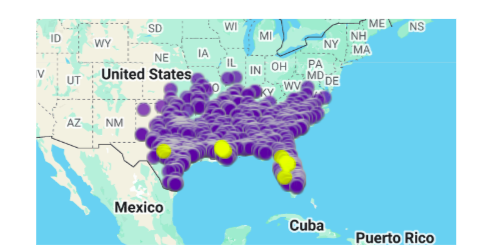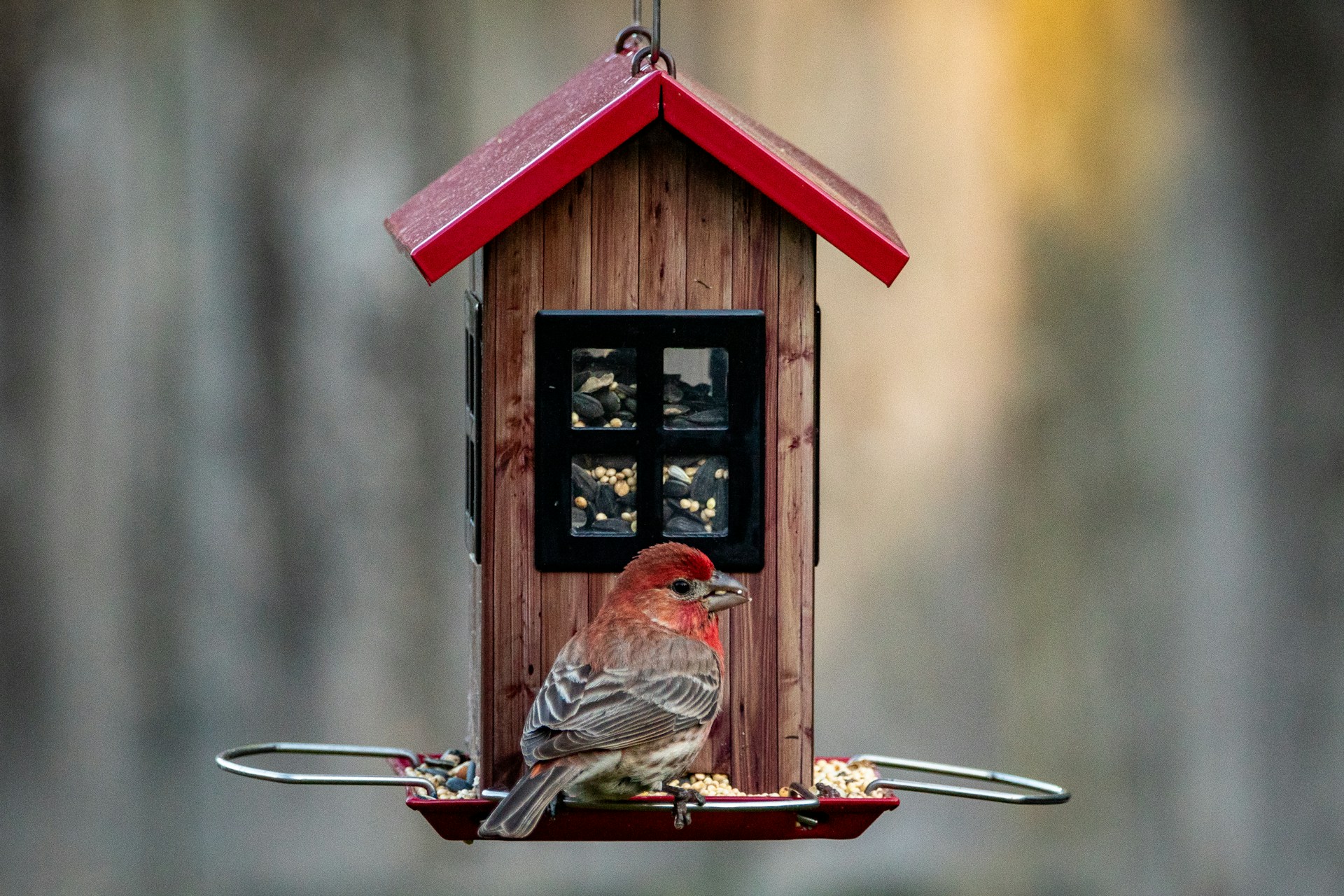PROTECT YOUR DNA WITH QUANTUM TECHNOLOGY
Orgo-Life the new way to the future Advertising by AdpathwayPurple Martins are stunning birds and have a long history connected to humans. Native Americans were known to have hung gourds to attract Purple Martins long before European colonization. This tradition highlights a long-standing appreciation for these birds. Europeans were not so good to these lovely birds with deforestation, resulting in Purple Martins now being almost entirely dependent on human-provided housing East of the Rocky Mountains. However, we have risen to the challenge, and there is now a huge groundswell of people who now give such as specially designed birdhouses and gourds for nesting. This unique relationship between humans and a wild bird species is quite remarkable.
There are lots of reasons to love Purple Martins. Firstly, they are skilled aerial insectivores, meaning they catch insects in flight. Their graceful and agile flight patterns are a delight to observe. They are also social birds, often nesting in colonies, which creates a lively and engaging atmosphere. Another reason they are beloved is that they consume large quantities of flying insects, contributing to natural pest control.
 Photo by Imogen Warren
Photo by Imogen WarrenBest of all, Purple Martins can be found across most of the continental USA at some time of the year. They breed across much of North America, east of the Rocky Mountains, and also in some parts of the western United States. They spend their winters in South America, primarily in Brazil. Purple Martins undertake a long and arduous migration journey to reach Brazil. They typically migrate in large flocks, following a general south-easterly direction in the fall, often congregating along the Gulf Coast before crossing the Gulf of Mexico.
 Photo by OakleyOriginals
Photo by OakleyOriginalsIn the spring, they reverse this route, returning to their breeding grounds. Their arrival times vary depending on latitude. Southern states see Purple Martins arriving earlier in the spring, while northern states see them later. Male Purple Martins typically arrive before females.
If you would like to attract Purple Martins to your backyard in the summer months and support them during the breeding season, then creating a safe environment with lots of nesting gourds is the way to go. Read on for all you need to know.
Proper Housing
Today, Purple Martins primarily nest in man-made structures. Your best way to get them to visit you is to offer multi-compartment houses or gourds specifically designed for them. These should be placed on poles, typically 10-20 feet high, and in open areas, away from trees and obstructions (Purple Martins need clear flight paths).
Ideally, locate houses 30-120 feet from trees and buildings. White housing is preferred as it reflects sunlight and keeps the nests cooler. Choose materials like aluminum, thick plastic, or untreated wood and ensure compartments are adequately sized, ideally 6×6 inches or larger. It is also important to install predator guards on the pole to prevent raccoons, snakes, and other animals from reaching the nests.
 Photo by Imogen Warren
Photo by Imogen WarrenHabitat Considerations
Purple Martins prefer open areas for foraging. Insects provide them with much of their water requirements but a nearby water source like a pond or lake can be beneficial. They hunt insects in the air, so a healthy insect population is crucial. Avoid pesticide use on your garden plants.
Timing and Maintenance
Put up housing before the Martins arrive in your area. Check local migration patterns to determine the appropriate time. You should always clean out houses and gourds annually after the Martins have migrated and regularly check for and address any damage or needed repairs.
 Photo by Imogen Warren
Photo by Imogen WarrenDeterring other birds
House Sparrows and European Starlings can take over Purple Martin housing. In particular, starlings are a huge problem as they will aggressively compete for nesting sites, and they are known to destroy Purple Martin eggs and kill nestlings to claim the nesting cavity. In some cases, starlings will even kill adult Purple Martins, particularly when they are trapped within the confines of the nesting cavity.
Even if these European invaders don’t take over the nests, their presence can deter Purple Martins from nesting altogether, even if they don’t directly kill them.
So, it is really important to take steps to deter these invasive species. The best way is to invest in houses with Starling-Resistant Entrance Holes (SREH). These unique adaptations are entrance holes with different shapes and dimensions that make it difficult for starlings to enter while still allowing Purple Martins to pass through. These holes come in various shapes, including:
- Crescent shapes
- Oval shapes
- Vertical slots
The size and shape of the entrance hole are very important. Starlings have a wider chest than Purple Martins, and this is what makes it difficult for them to enter. The design of SREHs takes advantage of the Purple Martin’s ability to navigate these specialized entrances, while starlings struggle due to their larger size and different body shape.
 Crescent-shaped SREH
Crescent-shaped SREHUsing Sound
When migrating, Purple Martins are searching for suitable nesting sites. Playback of their calls can pique their curiosity and draw them in for a closer look. Playing the vocalizations mimics the presence of an established colony, creating a sense of community and safety.
Various recordings are available, including dawn song, chatter calls, and arrival calls. These can be used at different times of day to maximize their effectiveness.
 Photo by JJ Cadiz
Photo by JJ CadizUsing Decoys
Purple Martin decoys, typically plastic replicas of the birds, provide visual confirmation that the housing is occupied. This can be especially important for attracting first-year Martins or migrating birds. Decoys create the illusion of an established colony, which can be reassuring to arriving Martins. The decoys are typically placed on top of or near the Purple Martin housing, making them highly visible.
The combined use of sound and decoys creates a powerful attractant. The sound draws the birds in, and the decoys provide visual confirmation that the area is safe and suitable for nesting.
Community
Connecting with local Purple Martin enthusiasts or organizations can provide valuable information and support. Working alongside others not only increases your knowledge of how to attract these wonderful animals but will also provide a cohesive regional approach to supporting them. The biggest organisation dedicated to this endeavour is the Purple Martin Conservation Association (PMCA).
The PMCA is a global leader in research, education, and conservation of Purple Martins, using citizen science reporting from across the United States. As part of their conservation efforts, the PMCA encourages regional reporting of the first martins to arrive each season. Known as ‘scouts’, they are an important part of tracking the spring migration to the U.S.
 Sample scout map from the PMCA
Sample scout map from the PMCAFinal Thoughts
The most effective way of bringing the wonderful Purple Martin to your backyard is to provide them with appropriate housing and then encourage them to notice you. It can be as simple or involved as you wish. Start by erecting martin houses or get in touch with local organisations to be more involved and knowledgeable. Either way, you won’t regret supporting these lovely birds.























 English (US) ·
English (US) ·  French (CA) ·
French (CA) ·